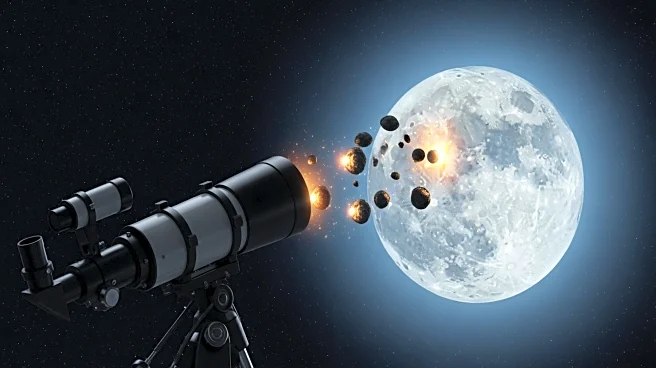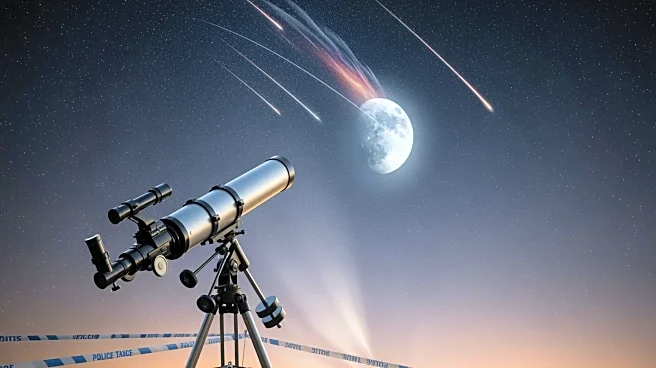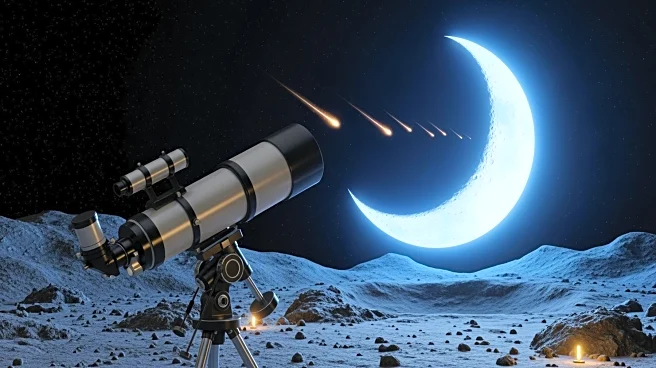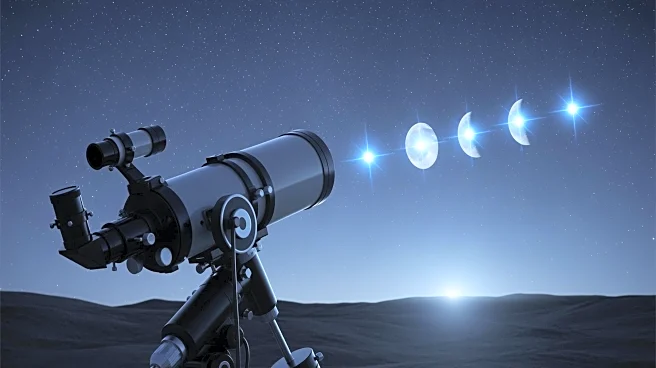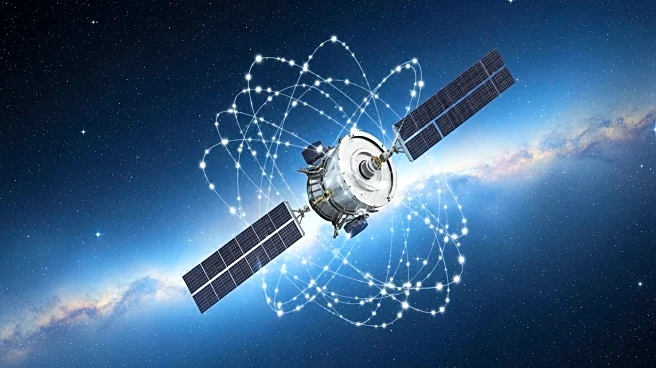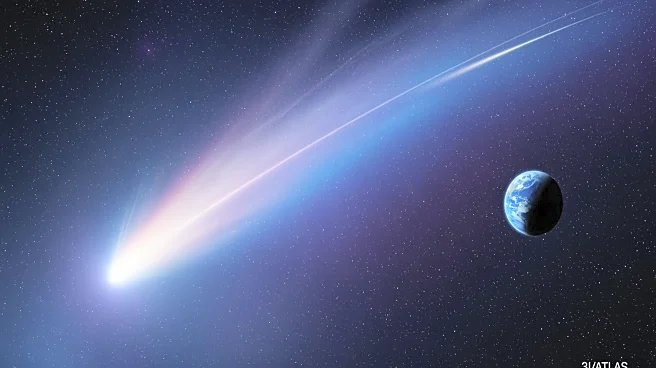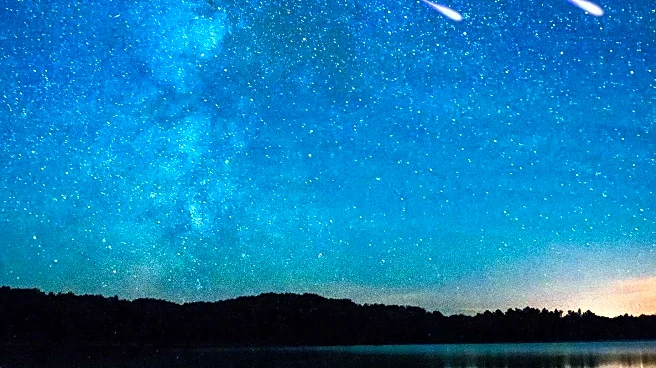What's Happening?
Daichi Fujii, a curator at the Hiratsuka City Museum in Japan, captured footage of two mysterious objects impacting the moon's surface. The first flash was observed on October 30 near the Gassendi Crater,
and the second on November 1 near Oceanus Procellarum. Fujii suspects these events were caused by the Southern Taurids or Northern Taurids meteor showers, known for producing bright meteors. The moon, lacking an atmosphere, allows meteors to create visible flashes upon impact, forming craters. NASA notes that hundreds of impacts occur annually, with some being more significant than others.
Why It's Important?
Understanding lunar impacts is crucial for future moon missions and the design of lunar bases. The moon's lack of atmosphere means that impacts are well-preserved, providing valuable data for astronomers. These observations help assess the frequency and energy of impacts, which can inform the safety and construction of future lunar infrastructure. The uncertainty in lunar impact rates highlights the need for continued monitoring and study, as these events could affect plans for establishing bases on the moon.
What's Next?
Continued observation and documentation of lunar impacts are essential for refining impact rate estimates. Fujii's work contributes to the broader understanding of celestial events and their implications for space exploration. NASA's Lunar Impact Monitoring program emphasizes the importance of capturing future footage to better understand these phenomena. As meteor showers continue to occur, astronomers will likely focus on capturing more data to improve predictions and safety measures for lunar missions.
Beyond the Headlines
The study of lunar impacts also touches on broader scientific inquiries, such as the origins and trajectories of meteoroids. These observations can provide insights into the composition and behavior of space debris, contributing to our understanding of the solar system. Additionally, the cultural fascination with celestial events underscores the importance of public engagement in astronomy, fostering interest and support for scientific endeavors.
